
The Berlin Observatory is a German astronomical institution with a series of observatories and related organizations in and around the city of Berlin in Germany, starting from the 18th century. It has its origins in 1700 when Gottfried Leibniz initiated the "Brandenburg Society of Science″ which would later (1744) become the Prussian Academy of Sciences. The Society had no observatory but nevertheless an astronomer, Gottfried Kirch, who observed from a private observatory in Berlin. A first small observatory was furnished in 1711, financing itself by calendrical computations.

Antoine Pesne was a French-born court painter of Prussia. Starting in the manner of baroque, he became one of the fathers of rococo in painting. His work represents a link between the French school and the Frederican rococo style.
Prussian Academy may refer to:

The Royal Prussian Academy of Sciences was an academy established in Berlin, Germany on 11 July 1700, four years after the Prussian Academy of Arts, or "Arts Academy," to which "Berlin Academy" may also refer. In the 18th century, when French was the language of science and culture, it was a French-language institution.

The Dresden Academy of Fine Arts, often abbreviated HfBK Dresden or simply HfBK, is a vocational university of visual arts located in Dresden, Germany. The present institution is the product of a merger between the famous Dresden Art Academy, founded in 1764, the workplace and training ground of a number of influential European artists, and another well-established local art school, Hochschule für Werkkunst Dresden, after World War II.

The Berlin-Brandenburg Academy of Sciences and Humanities, abbreviated BBAW, is the official academic society for the natural sciences and humanities for the German states of Berlin and Brandenburg. Housed in three locations in and around Berlin, Germany, the BBAW is the largest non-university humanities research institute in the region.
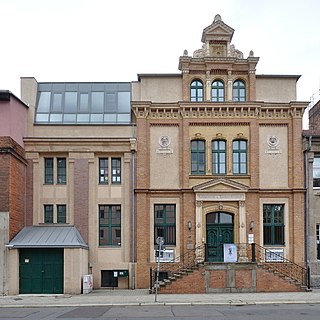
A Kunstgewerbeschule was a type of vocational arts school that existed in German-speaking countries from the mid-19th century. The term Werkkunstschule was also used for these schools. From the 1920s and after World War II, most of them either merged into universities or closed, although some continued until the 1970s.

Gustav von Alvensleben was a Prussian General der Infanterie.

Will Lammert was a German sculptor. In 1959 he was posthumously awarded the National Prize of the German Democratic Republic.

Josef Bernhard Maria Bleeker was a German sculptor.
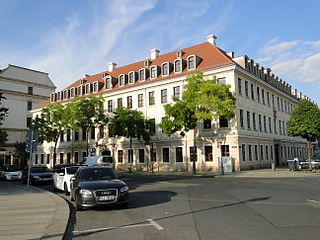
The Sächsische Akademie der Künste is a German cultural organisation for the state of Saxony, based in Dresden.

Karl Heinrich Magnus Wilhelm von Wedell-Piesdorf was a German politician for German Conservative Party.
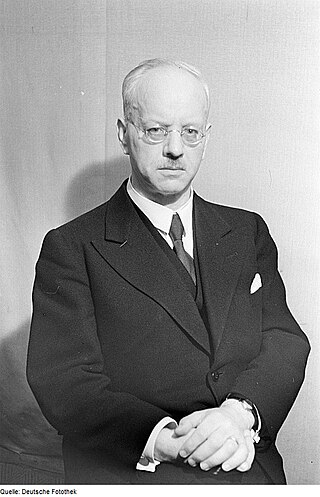
Johannes Stroux was a German classicist, scholar of Roman law and organizer of scientific projects and organizations. In 1945 he became rector of the Berlin University and president of the Berlin Academy of Science.

The State Academy of Fine Arts Stuttgart is a public fine art university in Stuttgart, Germany. It was founded in 1761 and has been located on the Weissenhof since 1946. Its campus consists of three buildings: the Altbau, Neubau 1 or "Architects' Building", and Neubau 2.
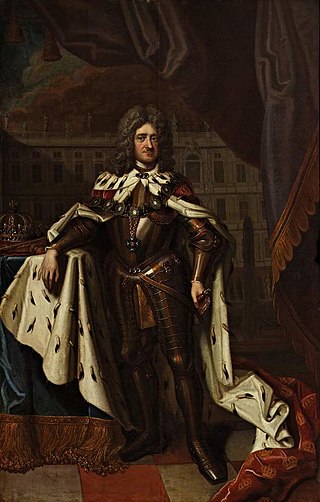
Friedrich Wilhelm Weidemann or Wiedemann was a German painter. From 1702 he worked as court painter to Frederick William I, prince and later king of Prussia. He also produced portraits of several other members of the Prussian royal family

Susanne Philippine von Nathusius was a German portrait painter who worked in Halle and Paris.
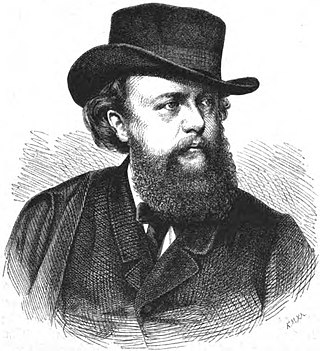
Robert Cauer the Elder was a German sculptor; known for his funerary art.

The Akademie der Künste der DDR was the central art academy of the German Democratic Republic (DDR). It existed under different names from 1950 to 1993. Then it merged with the "Akademie der Künste Berlin (West)" to become the Academy of Arts, Berlin.
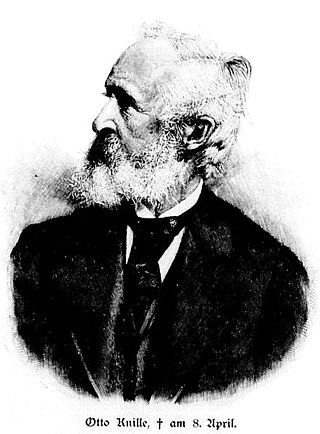
Otto Knille was a German history painter; associated with the Düsseldorfer Malerschule.

Frederick the Great was the subject of many portraits. Many were painted during Frederick's life, and he would give portraits of himself as gifts. Almost all portraits of Frederick are idealized and do not reflect how he looked according to his death mask. It has been suggested that the most accurate representation of Frederick may be the picture of a flautist from William Hogarth's series Marriage A-la-Mode.
![Arnim Palace [de], the Prussian Academy of Arts building on Pariser Platz in Berlin, c. 1903 Bundesarchiv B 145 Bild-P049294, Berlin, Akademie der Kunste.jpg](http://upload.wikimedia.org/wikipedia/commons/thumb/a/a9/Bundesarchiv_B_145_Bild-P049294%2C_Berlin%2C_Akademie_der_K%C3%BCnste.jpg/300px-Bundesarchiv_B_145_Bild-P049294%2C_Berlin%2C_Akademie_der_K%C3%BCnste.jpg)



















